Saurauia clementis is a species of flowering plant in the family Actinidiaceae. It is endemic to the Philippines. Elmer Drew Merrill, the American botanist who first formally described the species, named it after Mary Strong Clemens, the American botanist who collected the specimen that he examined.
Saurauia klemmei is a species of plant in the family Actinidiaceae. It is native to the Philippines. Elmer Drew Merrill, the American botanist who first formally described the species, named it after Wilhelm Klemme, a German forest officer, who collected the specimen Merrill examined from Luzon island in the Philippines.
Goniothalamus tavoyensis is a species of plant in the family Annonaceae. It is native to Myanmar and Thailand. Debabarta Chatterjee, who first formally described the species, named it after a town in Myanmar that at the time was called Tavoy, but has since be renamed Dawei.
Larsenianthus careyanus is a species of the ginger family (Zingiberaceae). It occurs in Bangladesh as well as northeast India. It is the type species of the genus Larsenianthus, which was newly established in 2010.
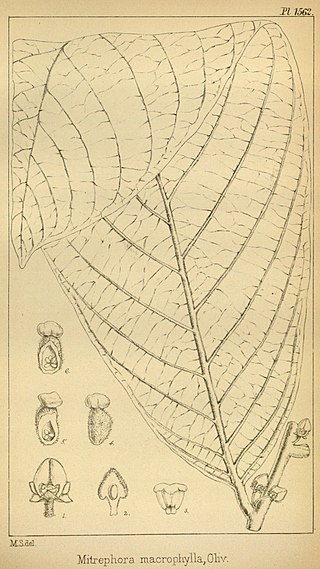
Pseuduvaria macrophylla is a species of plant in the family Annonaceae. It is native to Peninsular Malaysia, Sumatra and Thailand. Daniel Oliver, the English botanists who first formally described the species using the synonym Mitrephora macrophylla, named it after its large leaves.

Pseuduvaria reticulata is a species of plant in the family Annonaceae. It is native to Bangladesh, Borneo, Java, the Lesser Sunda Islands, Myanmar and Sumatra. Carl Ludwig Blume, the botanist who first formally described the species under the basionym Uvaria reticulata, named it after the net-like pattern of veins on the underside of its leaves.
Xylopia cuspidata is a species of plant in the Annonaceae family. It is native to Bolivia, Brazil, Colombia, Ecuador and Peru. Ludwig Diels, the botanist who first formally described the species, named it after the leaves which have an abruptly pointed tip.

Apocynum pictum is a species of plant in the Apocynaceae family. It is native to China, Kazakhstan, Kyrgyzstan, Mongolia, and Tajikistan. Alexander von Schrenk, the naturalist who first formally described the species, named it after colored flowers.
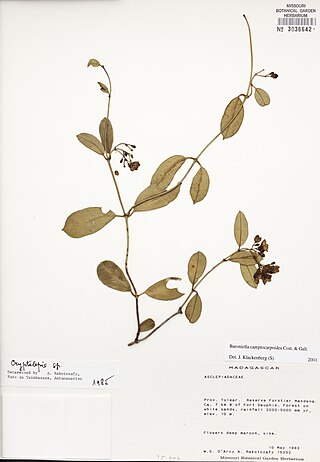
Baroniella camptocarpoides is a species of plant in the Apocynaceae family. It is endemic to Madagascar. Julien Noël Costantin and Ernest-Isidore Gallaud, the botanists who first formally described the species, named it after its resemblance to, but distinctiveness from, plants in the genus Camptocarpus.
Baroniella capillacea is a species of plant in the Apocynaceae family. It is endemic to Madagascar. Jens Klackenberg, the botanist who first formally described the species, named it after very narrow or thread-like leaves.
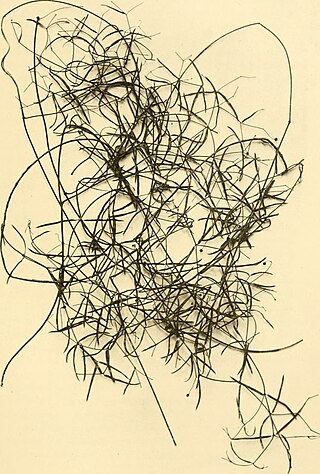
Baroniella linearis is a species of plant in the Apocynaceae family. It is endemic to Madagascar. Pierre Choux, the botanist who first formally described the species using the synonym Baseonema lineare, named it after its narrow leaves.

Batesanthus pseudopalpus is a species of plant in the Apocynaceae family. It is native to the Republic of the Congo and Gabon. Hendrik J. T. Venter and Rudolf L. Verhoeven, the botanists who first formally described the species, named it after the lobes of its corona which they said resemble the pedipalps of the rain spiders Palystes castaneus and Palystes superciliosus.

Batesanthus purpureus is a species of plant in the Apocynaceae family. It is native to the Cameroon, the Central African Republic, Democratic Republic of the Congo, Gabon, Guinea, Ivory Coast, Liberia, and Nigeria. Nicholas Edward Brown, the botanist who first formally described the species, named it after its purple flowers.
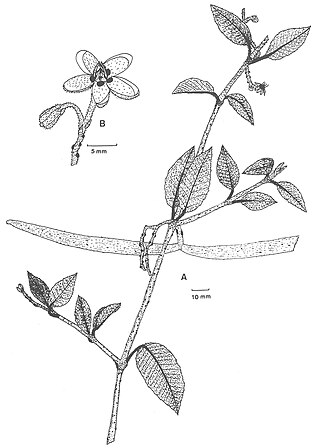
Buckollia tomentosa is a species of plant in the Apocynaceae family. It is native to the Ethiopia, Sudan, and Uganda. Eileen Adelaide Bruce, the botanist who first formally described the species, named it after the dense covering of wooly hairs on its flowers.

Buckollia volubilis is a species of plant in the Apocynaceae family. It is native to the Ethiopia, Kenya, Somalia, Tanzania and Uganda. Rudolf Schlechter, the botanist who first formally described the species, named it after its twining growth habit, using the synonymous name Raphionacme volubilis.
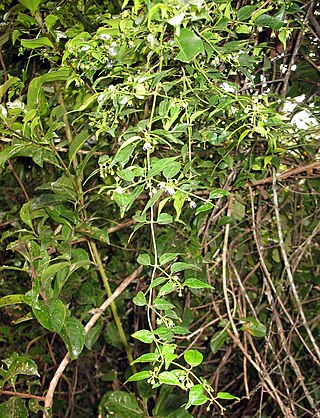
Camptocarpus acuminatus is a species of plant in the Apocynaceae family. It is endemic to the Madagascar. Pierre Choux, the botanist who first formally described the species, named it after the tapering tips of its leaves, using the synonymous name Tanulepis acuminata.

Camptocarpus crassifolius is a species of plant in the Apocynaceae family. It is endemic to Madagascar. Joseph Decaisne, the botanist who first formally described the species, named it after its thick leaves.
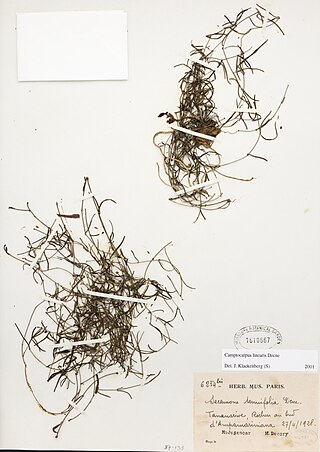
Camptocarpus linearis is a species of plant in the Apocynaceae family. It is endemic to Madagascar. Joseph Decaisne, the botanist who first formally described the species, named it after its narrow leaves.
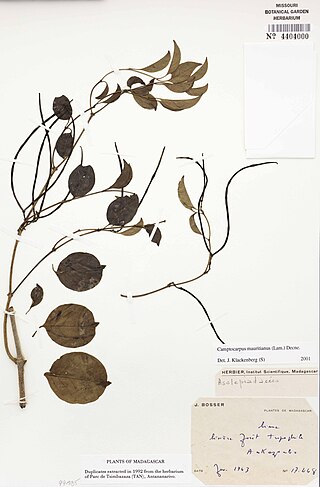
Camptocarpus mauritianus is a species of plant in the Apocynaceae family. It is native to Comoros, Madagascar and Réunion. Jean-Baptiste Lamarck, the naturalist who first formally described the species named it, using the synonym Cynanchum mauritianum, after the region of the Indian Ocean that includes the island of Mauritius, although the type specimen he examined did not list a specific location.

Chlorocyathus lobulata is a species of plant in the Apocynaceae family. It is native to the Cape Provinces of South Africa. Hendrik J. T. Venter and Rudolf L. Verhoeven, the botanists who first formally described the species named it, using the synonym Raphionacme lobulata, after the distinctive lobes of the corona of its flowers.














